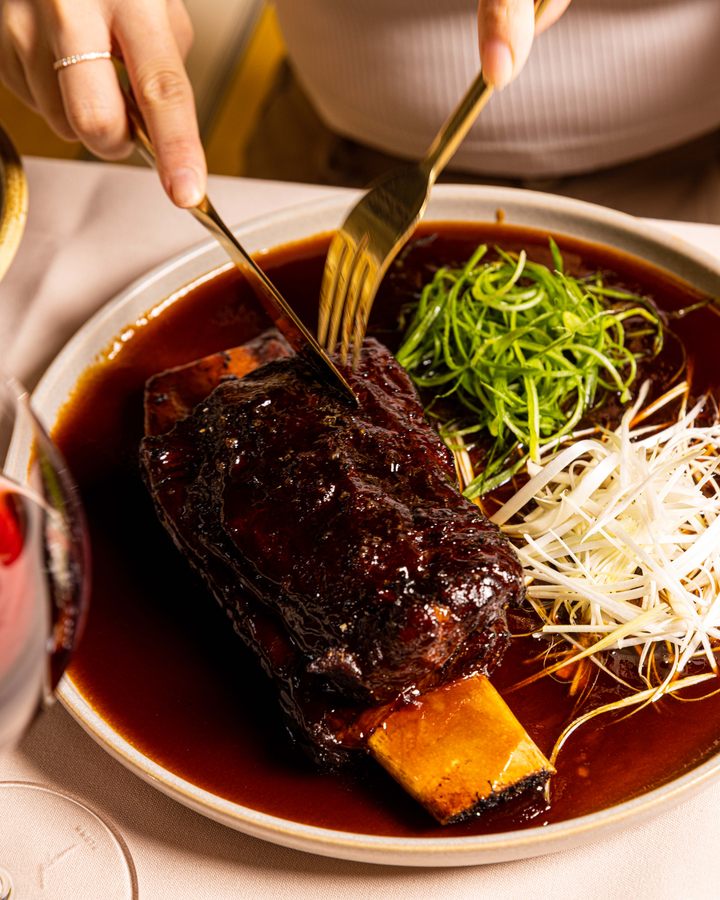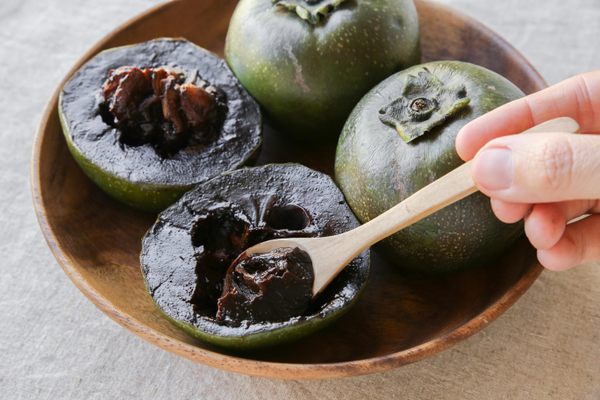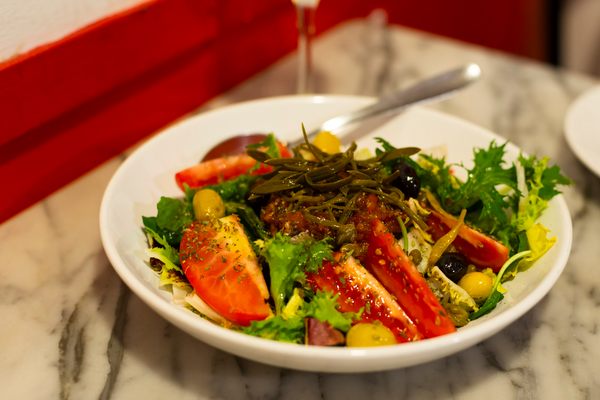

A Gastro Obscura Guide to Sydney
Wattleseed pudding, Vegemite-braised ribs, and more freewheeling fusion in the harbor city.
At first glance, Sydney may seem like it’s powered by sunshine, flat whites, and avocado toast. But that much-exported postcard image doesn’t reveal the harbor city’s entire culinary story. There’s also the significant imprint of Aboriginal Australians, the oldest continuous culture on the planet: Their 65,000 years of Indigenous knowledge is palpable in everything from bush teas to wattleseed desserts. Following British settlement in 1788, waves of migration have added new layers to Sydney’s eating habits, leading to a rich and multicultural culinary landscape that’s reimagined everything from imports (like chai and hummus) to local supermarket staples (such as Vegemite and Milo) in unique and memorable ways.
Indigenous Flavors
The Sydney Opera House might be the most famous landmark in Australia, but long before its iconic architectural sails rose over the city harbor, this site was known as Tubowgule by the local Gadigal people. Here, First Nations clans feasted on oysters and local seafood, and they’d shape the leftover seashells into a midden: a formation that helped them keep track of what they’d consumed, so they wouldn’t overfish anything.

Midden is also the name of the flagship Indigenous restaurant at the Sydney Opera House, with a menu overseen by First Nations and Bundjalung chef Mark Olive. Known internationally for his TV appearances on The Outback Cafe and The Chefs’ Line, Olive has also been a familiar face in Australia media since he first started cooking wattleseed crepes and emu pies on ABC TV decades ago. As Midden’s ambassador chef, he’s reinterpreted Western staples with the unmistakable flavor of Indigenous ingredients. Hummus has the herbal hit of native thyme and is served on toasted Tasmanian mountain pepper flatbread and garnished with samphire (also known as sea asparagus). Pesto is blitzed with macadamias and Warrigal greens (its other name, “Botany Bay spinach,” refers to the nearby Sydney waterway), while bread-and-butter pudding benefits from the coffee-like hit of wattleseed and desert lime custard. At the end of the meal, don’t miss the bracing taste of Olive’s bush pavlova, with its vivid medley of native fruits (which can include rosellas, riberries, and Illawarra plums).

At the nearby Royal Botanic Gardens, you can get a multisensory education on native ingredients during an Aboriginal Bush Tucker tour. As you walk through the grounds with an Indigenous guide, you’ll encounter the tart taste of finger lime (also known as bush caviar), learn about the medicinal power of lemon myrtle (which helps soothe sore throats), inhale the fresh scent of just-crushed river mint or cinnamon myrtle leaves, and snack on Davidson plums and Atherton raspberries. You can also opt for the gardens’ Aboriginal Harbour Heritage Tour, which gives you the history of Gadigal people in the area and offers strong examples of Indigenous science—such as First Nations communities collecting threads spun by golden orb spiders and turning them into fishing lines. The webs are as strong as Kevlar or steel and have even been incorporated into NASA experiments.

If you’re still hungry after a tour, drop by Kiosk, located just outside the Botanic Gardens. The Indigenous canteen for the Art Gallery of NSW offers lemon myrtle roast chicken pies, veggie damper rolls, native mango teas, and more. The menu is curated by Indigenous elder Aunty Beryl Van-Oploo, a Gamilaroi (Kamilaroi) woman who has shared her knowledge of bush foods with renowned chefs such as Noma’s René Redzepi and Lucky Kwong’s Kylie Kwong. You can also pick up condiments by local Indigenous producers from the counter, such as Indigiearth’s saltbush dukkah, Mabu Mabu’s rice spice, and Warndu’s quandong and anise myrtle tea.

Asian Influences
Vegemite on toast is a classic Australian breakfast staple, but that’s not why there are Vegemite pork ribs that are braised for 12 hours at Ho Jiak Town Hall. The dish’s origin story goes back to Malaysia, where chef Junda Khoo grew up. There, he savored Marmite pork ribs with his grandfather. When he moved to Sydney, he swapped the salty British yeast spread for the Australian version, Vegemite. He’s also experimented with another popular mass-market Aussie product—Milo—and made a version of tiramisu replacing the traditional strong hit of coffee with the sweetness of the kid-friendly choc-malt drink commonly enjoyed after school. But it’s not all Aussie upgrades: The restaurateur has has created multicultural spins on international classics: Caesar salad, for instance, gets rebooted with crunchy deep-fried tofu instead of croutons, tea-smoked eggs instead of soft-boiled ones, and Caesar dressing made from Indomie instant noodle flavor sachets. Then there’s his roti pizza, which is spiced with a tom yum topping.

Meanwhile in the Inner West neighborhood, the bakeshop Tokyo Lamington remixes another traditional Aussie favorite: the chocolate-and-coconut cake known as the lamington. Founders Eddie Stewart and Min Chai originally planned to launch this concept in Japan (their yuzu meringue even uses citrus juice sourced from Hagi, west of Hiroshima), but ended up opening the first permanent Tokyo Lamington shop in Sydney’s Newtown in 2021.
The second outpost in nearby Marrickville name-checks the suburb’s multicultural heritage with items reflecting its diverse demographics (with desserts modeled after Italian ricotta cheesecake, Filipino ube, and Vietnamese coffee). But there are plenty of nods to classic Australian flavors, as well: The fairy bread lamington is dipped in white chocolate, filled with popcorn buttercream, and coated in colorful sprinkles—a callback to the sugary sandwich’s compulsory appearance at kids’ parties. Tributes to Australian ice-creams (like Pine-Lime Splice) and biscuits (Iced VoVo), and specials made with native ingredients, like vanilla cream with strawberry gum jelly, have also hit the counter.

Drinks With a Local Twist
Marrickville is also home to a beloved craft beer scene that includes Wildflower brewery and its unique showcase of hyper-local ingredients. The ales are fermented with wild yeasts that have been collected from native flowers across the state. Over the years, brewers have conducted kvass-like experiments using leftover sourdough from the wood-fired ovens at Sydney’s Ester restaurant; crafted a beer base with a unique saltwater character using oyster shells collected from a local wine bar; and created wild ales with a golden complexity by refermenting them with honey wax from the Blue Mountains and woodlands of the Central Tablelands of NSW.
While you’re here, you should reach for Wildflower beers named after the children of Wildflower’s founders, Chris Allen and Topher Boehm; a highlight is the St Phoebe, a golden, barrel-aged ale originally made with native raspberries and now sweetened with Mariposa plums from Moonacres Farm in the Southern Highlands. There’s also the ongoing collaboration with Lucien Alperstein, which has evolved from producing cider made from random assortments of apples scattered by roadsides to using an orchard that’s home to 300 varieties of the fruit.

For experimental brews that will leave you buzzing with ginger and pepper, head to Ambi’s Chai Bar. Step inside either the West Pennant Hills or North Sydney location, and your senses will instantly be jolted by the multi-fragrant sensation of the 15 different spiced teas that simmer on pots here. Owner Ambi Thind has created recipes for nearly 40 kinds of chai at his tea bars. His “Afro-Punjabi” style reflects his upbringing in Kenya and his Indian heritage. The spice levels are much higher than typical masala chai and each cup reflects his life story (which includes farming in Zambia, peacekeeping in Cold War Germany, and coming to Sydney as a hockey coach). Each flavor is christened after a person, such as a colleague, regular, or athlete he used to coach. His namesake flavor, Ambi, is a milder concoction with pepper and cardamom, while the Simba doubles the levels of ginger and other spices, and is sweetened with jaggery (caramelized sugar). The Amritsar is a creamier chai, inspired by a tea-sipping tour through India last year.
Gastro Obscura covers the world’s most wondrous food and drink.
Sign up for our regular newsletter.

























Follow us on Twitter to get the latest on the world's hidden wonders.
Like us on Facebook to get the latest on the world's hidden wonders.
Follow us on Twitter Like us on Facebook